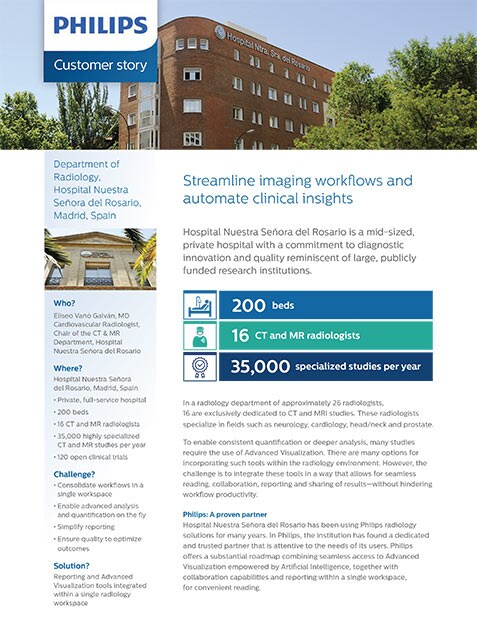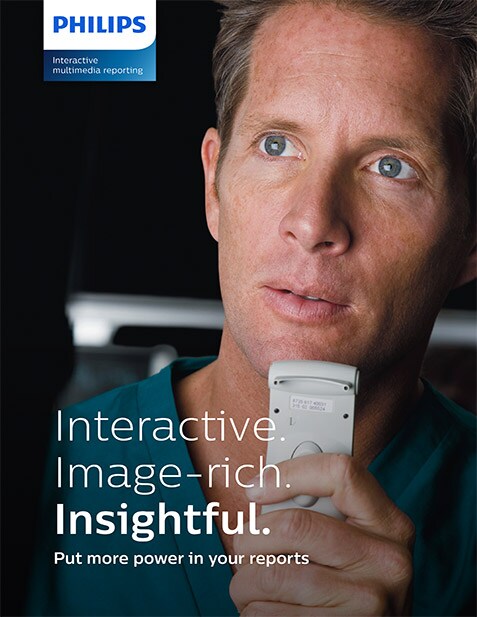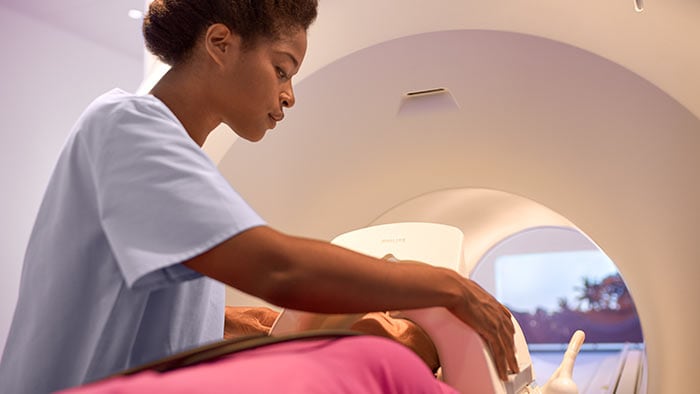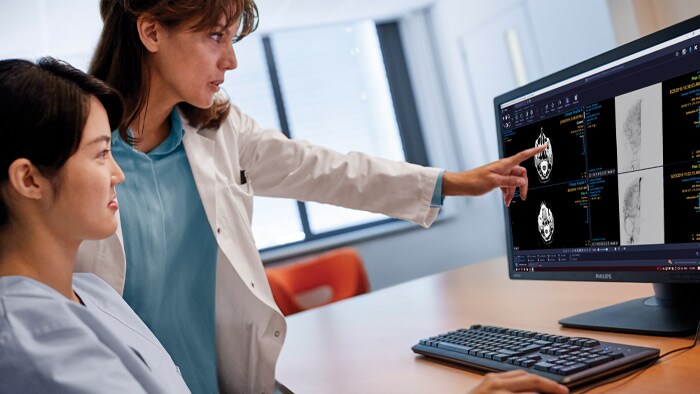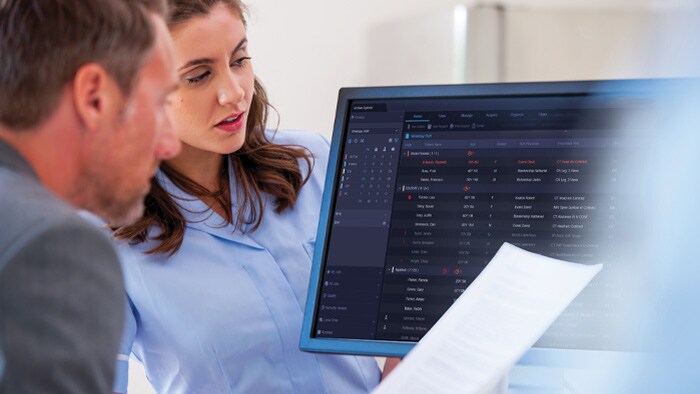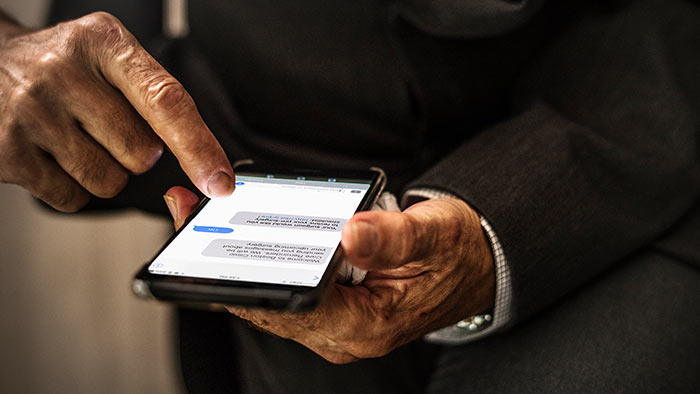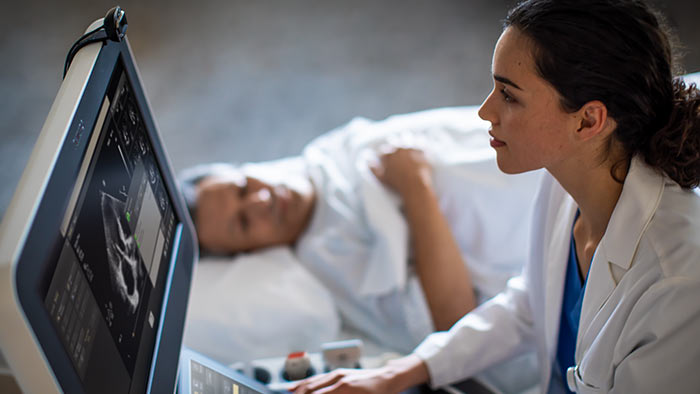Radiology
What if radiologists could significantly reduce their reporting time while increasing the value of the report?
We expect a multimedia experience in our everyday lives. Why not deepen clinical insight by bringing a multimedia experience to radiology reporting, especially if it’s easy?
This article looks at the hyperlinked, voice-activated, multimedia reporting that is changing radiology reporting for good. This kind of reporting answers the needs of today’s referring physicians, who want fast turnaround times and also reports with greater insight. Making it quick and easy to create these reports helps radiologists save time while increasing the value of the report.
In oncology and other complex clinical domains where patients are often followed over long periods of time, referring clinicians are looking for radiology reports to provide detailed, longitudinal insights without having to dig for prior reports and manually compare images.
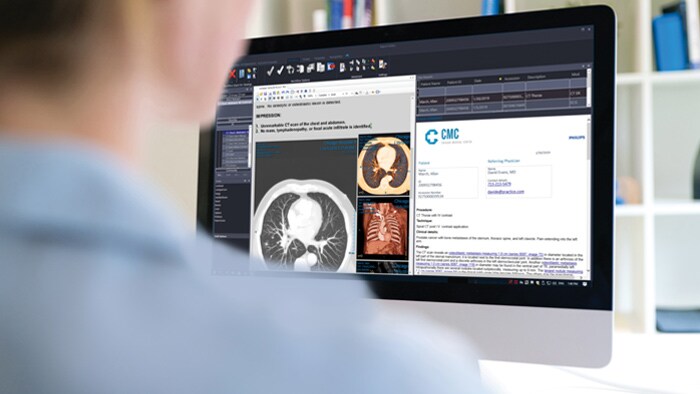
At a glance
Challenge
Currently, radiologists still face the challenge of manually importing measurements and relevant findings into the radiology report, which can cause errors and fail to adequately convey the value of their analysis and clinical insights.
Solution
Results
A single user interface for reading images and reporting includes speech recognition, editing, and the ability to embed key images for side-by-side comparison. Easily view bookmarked findings as part of the entire imaging study.
Share this article
How serious an issue is reporting?
97% of radiology departments are unable to meet reporting requirements1
It’s harder to comply with evolving demands if your radiology reports are stuck in the past
Ever since Wilhelm Röntgen discovered the X-ray 125 years ago, radiology reports have not fundamentally changed in format, relying on a text-based narrative to convey findings to physicians and patients.2 What has changed are the expectations for radiologists to provide reports within rapid turnaround times to give referring clinicians the data they need, when they need it, at the point of care.
This challenge is complicated by the difficulty of evaluating data that may live in various locations, from various modalities, acquired at various levels of image quality, as well as the need to use various advanced visualization solutions on separate workstation solutions to address complex cases. Radiology managers are challenged by the department-wide need to be sure that reports are read accurately, and that clinicians and other radiologists are consulted as appropriate. This is a lot to ask of an old-style radiology report.
The radiologist’s time is at a premium
Given healthcare’s insatiable demand for diagnostic imaging and a growing global shortage of imaging professionals, radiologists will be under greater pressure to produce timely reports with better data and greater clinical insight. Supporting them is critical to helping clinical teams move patients efficiently along the care pathway.
Better insights communication and more value to referring physicians
Fortunately, radiology reporting is moving into the hyperlinked, voice-activated, multimedia world that already enables us in our everyday lives. A more content-rich report, easily created, allows radiologists to share the data and analysis behind image interpretation, providing greater value to referring physicians.
Interactive multimedia reporting allows radiologists to embed key images for side-by-side comparison, with hyperlinks to view compared prior studies in the enterprise viewer, as well as tables and graphs to clearly track the progress of findings over time.
With voice dictation, a clinician can simply use commands such as “add key images” to embed images into the report. Adding quantitative data from advanced post-processing is easy, too. There’s no need to navigate between different tabs, places in the menu, or within the application. Native interactive multimedia reporting and advanced visualization applications – as part of a single unified workspace – eliminate the need for a separate reporting solution.
See the rich content of a multimedia report
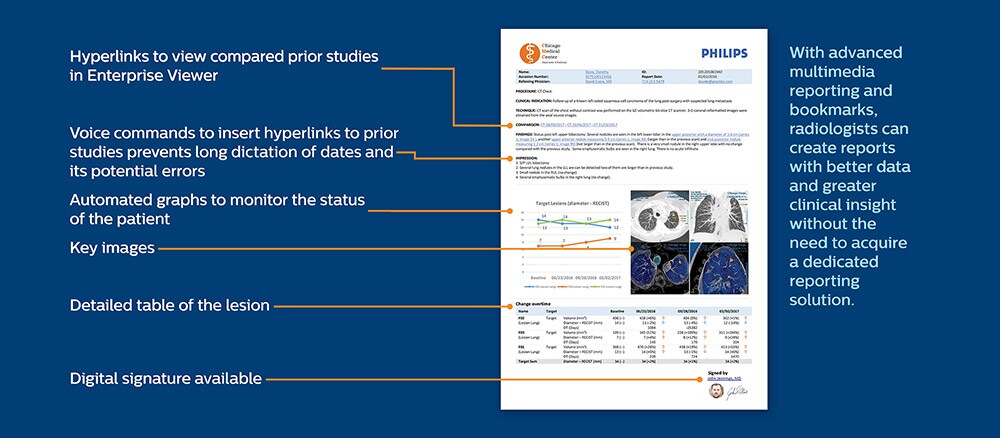
With advanced multimedia reporting and bookmarks, radiologists can create reports with better data and greater clinical insight without the need to acquire a dedicated reporting solution.
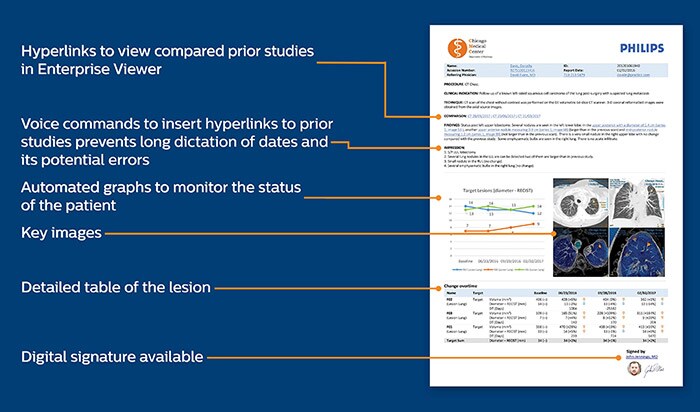
How Hospital Nuestra Señora del Rosario is saving time and increasing the value of radiology reports
Radiologists at Hospital Nuestra Señora del Rosario, in Madrid, Spain, share how multimedia reporting has streamlined their clinical workflows and automated communication of clinical insights.
Increasing automation and quantification greatly increases the quality of the report.”
Eliseo Vañó Galván, MD
Cardiovascular Radiologist and Chair of the CT & MR Department, Hospital Nuestra Señora del Rosario, Madrid, Spain
Customer story
Interested in learning more about why teams at Hospital Nuestra Señora del Rosario have embraced multimedia reporting?
Save 8.9 minutes in assessing tumor burden compared to text-only reports3*
Radiology leaders who have adopted multimedia reporting claim, jokingly, that their clinical colleagues won’t let them ever go back to “old-school” reports. Referring clinicians can now click on the embedded images for closer inspection without having to leave the report. This can be a big time-saver. One study showed that multimedia reports can save oncologists 8.9 minutes in assessing a patient’s tumor burden compared to text-only reports.3
Save time while increasing quality
Multimedia reporting has proven a time-saver for radiologists – even as it significantly increases the depth and quality of information it conveys. With embedded voice-recognition capability, this module of the Philips enterprise imaging platform can help cut reporting turnaround time by eliminating the need for typing and manual entry of patient data or clinical context. Exam data can be inserted directly into reports, enabling radiologists to quickly review and approve final reports while adding clinical context for referring physicians.
How Philips can support you
Philips interactive multimedia reporting module offers users a single interface for reading images and reporting with the ability to embed key images for side-by-side comparison, add charts, graphs and hyperlinks to easily view bookmarked findings as part of the entire imaging study, and utilize speech recognition and editing capabilities. All of this is integrated with quantitative data from advanced postprocessing across dozens of image analysis applications.
Go deeper
Curious about how this solution can help address your reporting challenges?
*Results presented are for illustrative purposes only and are not predictive of actual results for your business. 2 Folio L, et al. Multimedia-enhanced radiology reports: concept, components, and challenges. RadioGraphics. 2018;38(2): DOI: 10.1148/rg.2017170047 3 Folio L, et al. Initial experience with multi-media and quantitative tumor reporting appears to improve oncologist efficiency in assessing tumor burden. Research findings presented at the RSNA 101th Scientific Assembly and Annual Meeting. Chicago, IL. 2015. archive.rsna.org/2015/15005140.html.
1 www.cqc.org.uk/sites/default/files/20180718-radiology-reporting-review-report-final-forweb.pdf.
Share this article
Sign up to receive news and updates from Philips
At a glance
Challenge
Currently, radiologists still face the challenge of manually importing measurements and relevant findings into the radiology report, which can cause errors and fail to adequately convey the value of their analysis and clinical insights.
Solution
Results
A single user interface for reading images and reporting includes speech recognition, editing, and the ability to embed key images for side-by-side comparison. Easily view bookmarked findings as part of the entire imaging study.
Other radiology workflow challenges in focus
-
![Image acquisition]()
What if your radiology systems were so intuitive and intelligent that your imaging teams got the image right the first time, every time?
Click here to learn more -
![Streamlining image interpretation and reporting]()
What if radiologists could organize, review, analyze and report imaging studies using just one workspace?
Click here to learn more -
![Workflow orchestration]()
What if the right radiologist were automatically chosen to read the right case at the right time?
Click here to learn more -
![Patient engagement in radiology]()
What if every imaging patient showed up on time and prepared?
Click here to learn more -
![Tele-acquisition and remote collaboration]()
What if your imaging team could access expert support for complex procedures and protocols whenever they need it?
Click here to learn more
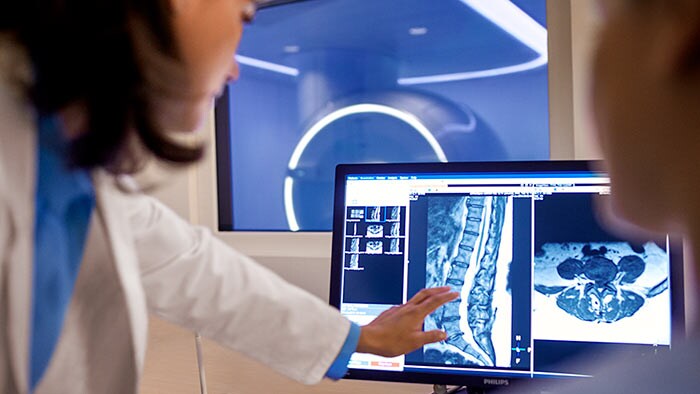
Integrating radiology workflows to accelerate precision diagnosis
Philips helps integrate radiology workflows to accelerate your path to precision diagnosis. Improve and streamline workflows. See how.
